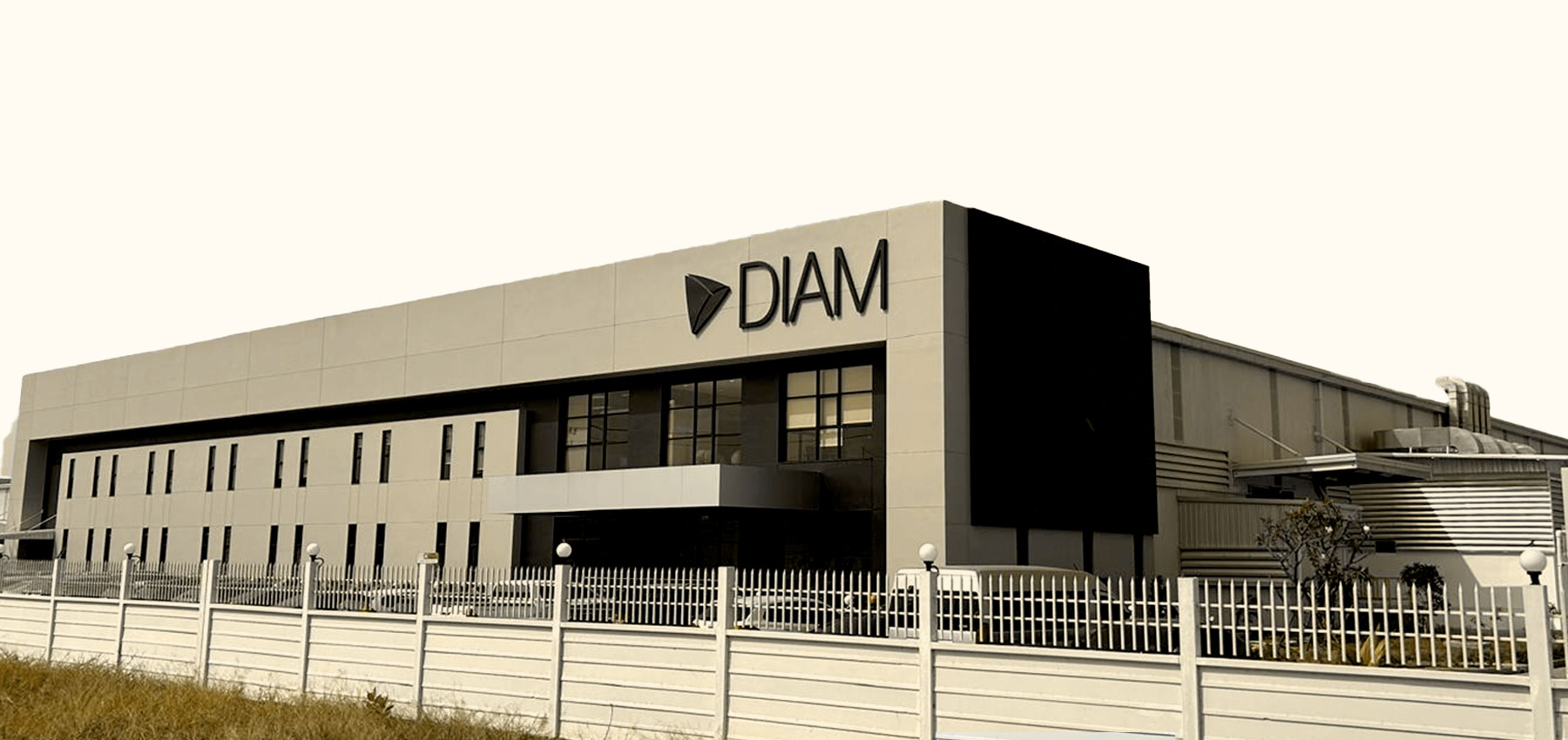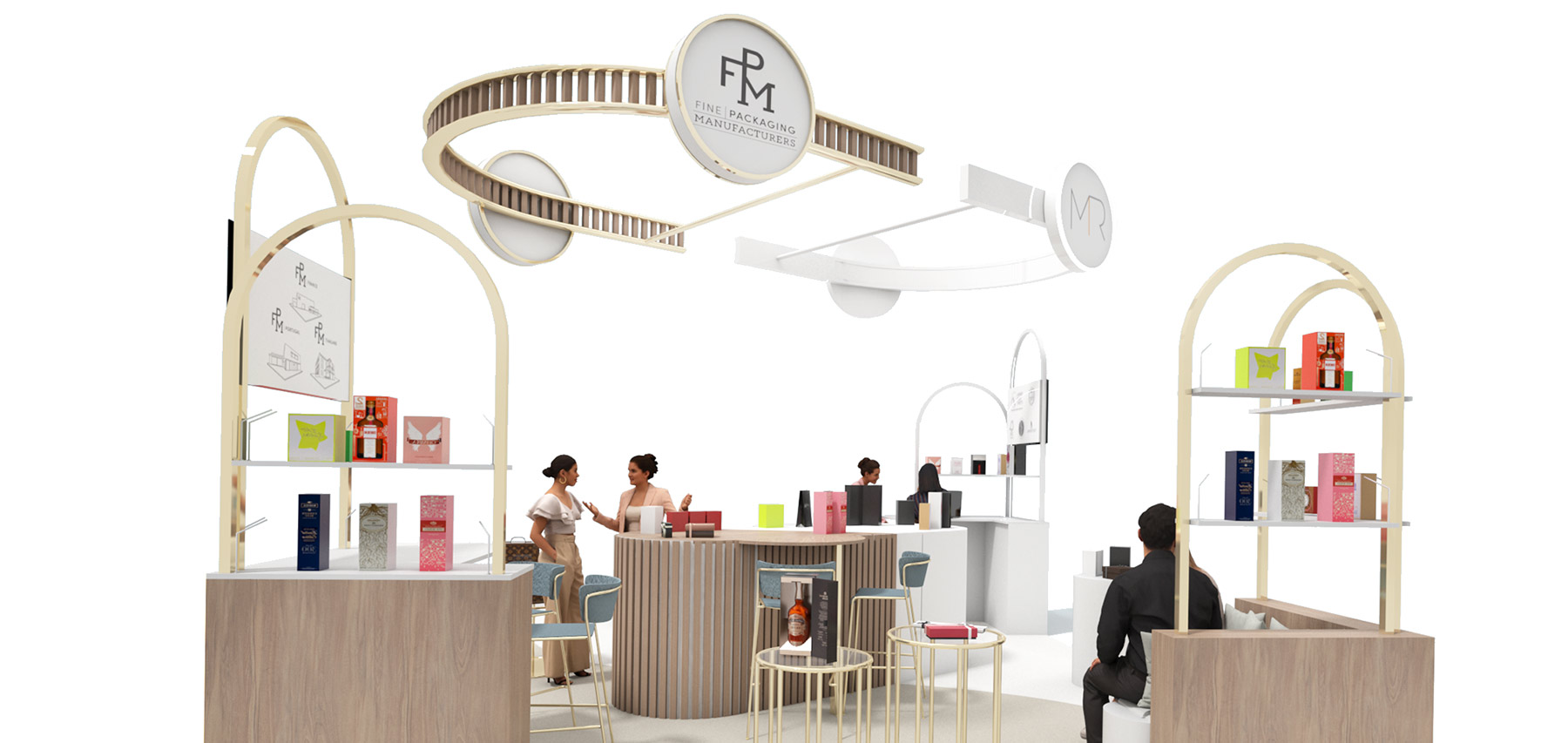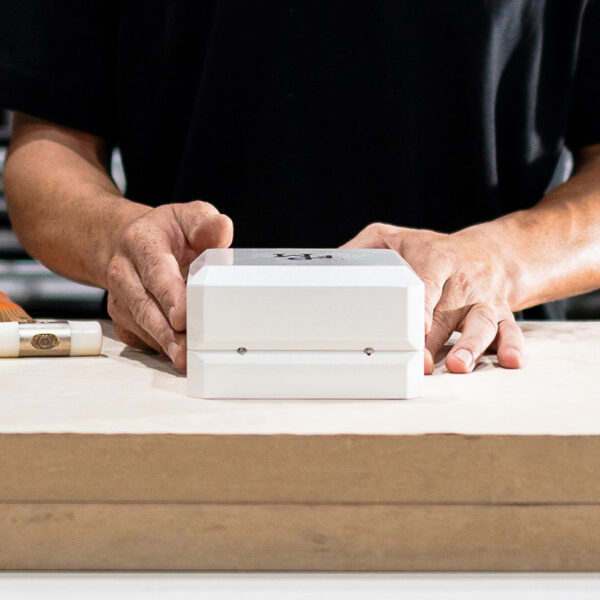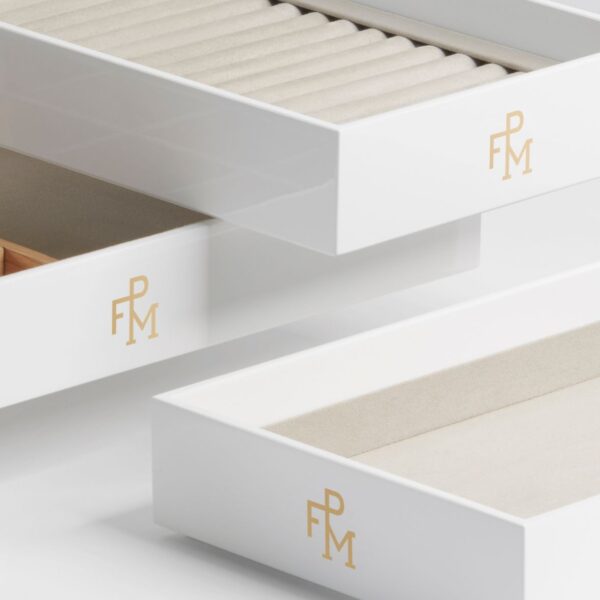Positive sourcing
Material is at the heart of our expertise.
Creativity, sensory appeal, malleability, and feasibility all play a role in our selection process. Our decisions are not only about translating your design ideas; we also take into account a global eco-design approach based on a thorough product life cycle analysis. Material is quite naturally the starting point of our ecofriendly approach.
Material is quite naturally the starting point of our ecofriendly approach.
The DIAM group has been following a practical strategy for over 10 years now and is among the first 400 global companies to be certified by SBTi (Science-based Target Initiative) – a Paris Agreement initiative launched during COP 21. SBTi’s well-defined goal is for companies to support states in limiting global warming to 1.5°C.
Here at FPM, Fine Packaging Manufacturers, plastics, wood, and wood derivatives (plywood, MDF, etc.) are key materials in creating our packaging. We therefore pay particular attention to their origins and compositions, striving to constantly innovate and improve our impact.
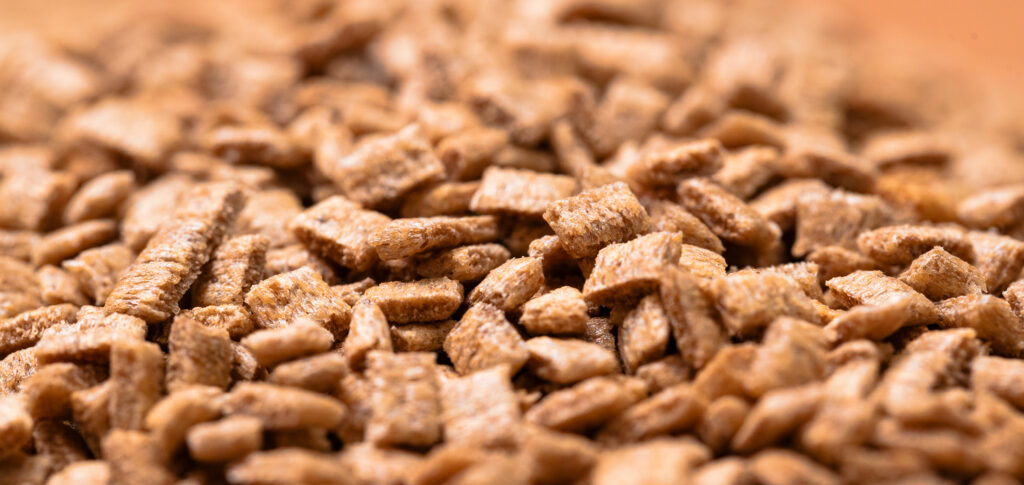
Towards alternative plastics
Zero plastic could well be viable one day, but for now, the material remains prominent throughout the packaging industry. Until then, the question is: How can we do better?
Virgin plastic is made up of a mixture of fossil fuel materials. The first good move to avoid depleting resources is to choose recycled plastic. The principle behind recycled products – themselves recyclable – lies in reusing existing material in production. Among the many objectives set with SBTi, the DIAM group has committed to using 80% recycled material in its plastic supplies by 2030.
Our research goes even further, aiming to rework the composition of our recycled plastic from the ground up and answer the question: How can we produce a plastic that’s better for the environment?
While we wait for bioplastics made entirely out of renewable resources to arrive on the market, we’re working on fillers linked to recycled materialstrying to reduce the weight and ecological impact of our material.
Pinpointing the right blend of vegetable and mineral is harder than you would expect!
Fillers affect the material’s malleability, during transformation and contribute to its final appearance, smell, and texture. The material can become rough, brittle, show flow marks, warp, and even burn during injection. We are adopting an engineering approach in collaboration with suppliers across our entire production chain. We’re testing different chalk fillers, for example.
To find plant fillers, running a local sourcing analysis becomes crucial. Supply should be considered within a circular agricultural sector. FPM Thailand is working on by-products from the rice, bamboo, and cane sugar industries, as well as rubber tree residue, given that the latex sector is a major player locally. FPM Portugal is currently testing a filler made from olive pits.
We still have a long way to go to find the perfect proportions, but the stakes are important. FPM shares the DIAM group’s commitments and is aiming high in carrying out its responsibilities.
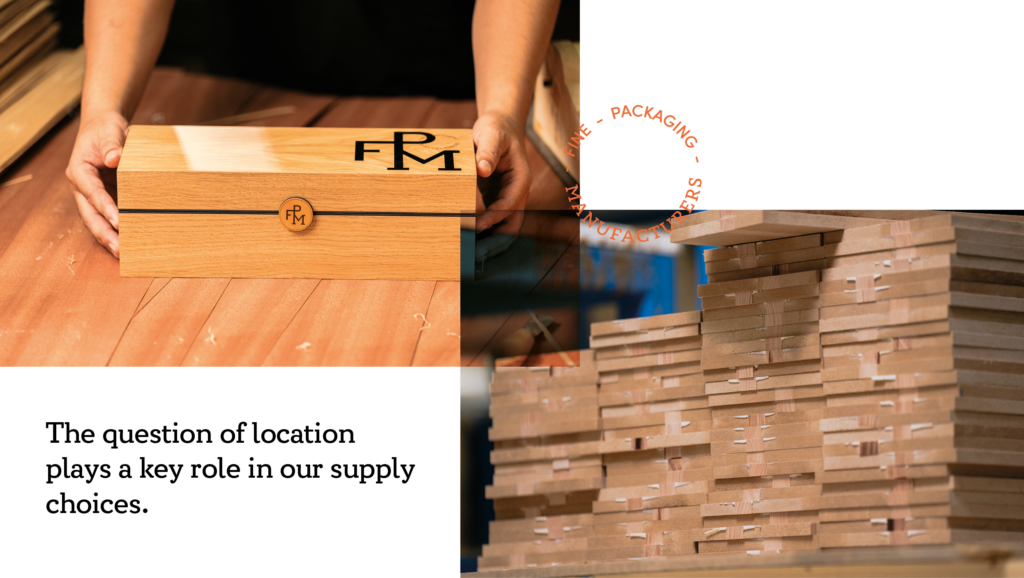
Responsible wood sourcing
Wood is one of the most-used materials in our various packaging designs, whether it’s valuable and rare woods, MDF, or plywood (depending on its function in the design).
Here, too, the question of location plays a key role in our supply choices; we prioritize local resources.
For example, the PEFC®-certified plywood used at FPM France is exclusively sourced from a local supplier in the Sarthe region.
Contrary to popular opinion, the wood industry is not harmful to the environment. A forest is alive. Every forest, according to its nature and especially age, contributes more or less to carbon sequestering. Responsible forestry is essential. The FSC® label guarantees that materials are issued from regulated, sustainable sources and are harvested responsibly. FPM Portugal and FPM Thailand are FSC®-certified.
Our approach to sourcing isn’t restricted to wood and plastic, nor to the environment alone! The whole range of materials we use, including fabric and metals, are carefully selected according to their functional, ecological, and of course aesthetic advantages. A packaging’s excellence is measured not only by its quality but also by its responsibility
A packaging’s excellence is measured not only by its quality
but also by its responsibility.
FPM teams

